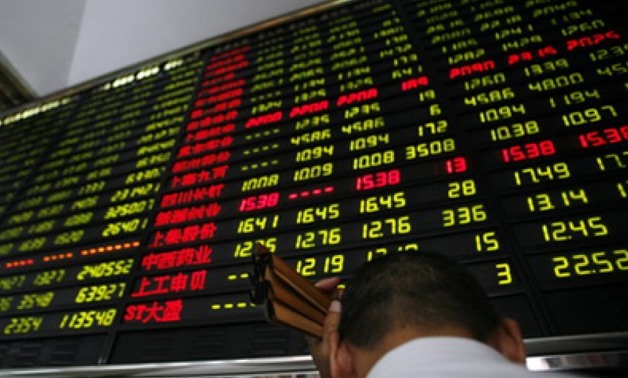
Stocks - Creative Commons
LONDON - 30 May 2019: Markets saw a modest rebound in risk appetite on Thursday, as traders took a break from selling beaten-down stocks and pumping money into safe-haven bonds and the dollar.
The end the most turbulent month of the year so far was approaching and amid ongoing and fierce U.S-China trade tensions investors seemed content to square up some positions.
European stocks nudged 0.2%-0.5% higher having lost a third of the 15% gain they had been carrying into May, the major currencies paused, while German Bund yields climbed for the first time in four days having hit record lows.
Money markets are now pricing in roughly two U.S. rate cuts by the start of next year and the European Central Bank is set to turn on its money taps again next month as trade worries weigh on the global economy.
“We oppose a trade war but are not afraid of a trade war,” Chinese Vice Foreign Minister Zhang Hanhui said on Thursday in Beijing, when asked about the tensions with the United States.
“This kind of deliberately provoking trade disputes is naked economic terrorism, economic chauvinism, economic bullying,”
His comments followed reports from Chinese newspapers that Beijing could use rare earths to strike back at Washington after U.S. President Donald Trump remarked he was “not yet ready” to make a deal with China over trade.
In contrast to Europe’s early gains, the tense mood saw Shanghai Composite Index fall 0.7% overnight, tech stocks sink 1.4% and Hong Kong’s Hang Seng lose 0.4%.
Japan’s Nikkei went down 0.5% too and Australian stocks shed 0.85% as miners there mourned what is set to be the worst month for copper prices since 2016 having slumped over 9%.
MSCI’s broadest index of Asia-Pacific shares outside Japan had slipped to a fresh four-month low before finding a bit of traction to edge up 0.1% into the close.
“The equity markets are in the midst of pricing in a long-term trade war, with participants shaping their portfolios in anticipation of a protracted conflict,” said Soichiro Monji, senior strategist at Sumitomo Mitsui DS Asset Management.
“The upcoming G20 summit could provide the markets with relief, as the United States and China could use the event to begin negotiating again over trade,” he added, referring to the June 28-29 gathering of leaders in Japan.
GREENBACK WITH ENVY
Notwithstanding the fractional tick-up in Treasury yields, the dollar index against a basket of six major currencies was steady at 98.085 and in reach of a two-year peak of 98.371 set last week.
The greenback was little changed at 109.660 yen after bouncing back from a two-week low of 109.150 and the euro steadied at $1.1132 following three successive days of losses.
“The strength in the dollar is surprising given that markets are now expecting multiple rate cuts by 2020,” Commerzbank FX strategist Ulrich Leuchtmann said.
Oil prices rose modestly after an industry report showed a decline in U.S. crude inventories that exceeded analyst expectations. [O/R]
The rise followed volatile trading on Wednesday, when oil prices fell to near three-month lows at one point as trade war fears gripped the commodity markets.
U.S. crude futures were up 0.66% at $59.20 per barrel after brushing $56.88 the previous day, their lowest since March 12. Brent crude added 0.37% to $69.71 per barrel.
Trade worries have weighed on oil but supply constraints linked to the Organization of the Petroleum Exporting Countries’ output cuts and political tensions in the Middle East have offered some support.
Comments
Leave a Comment